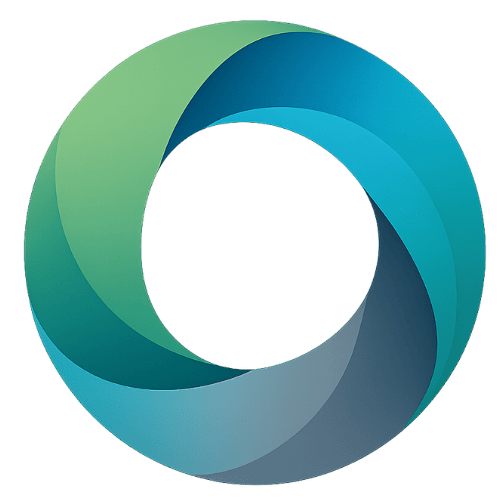LCA Basic Training Plan [Duration 4 hours]
Recommended for LCA beginners, students, and decision-makers seeking a fundamental understanding of LCA.
Training Curriculum
1. Introduction to LCA
- General Principles of LCA – Introduces the fundamental concepts, purpose, and benefits of conducting a life cycle assessment.
- The Four Phases of LCA – Explains the four key phases: goal and scope definition, life cycle inventory (LCI), life cycle impact assessment (LCIA), and interpretation.
2. System Definition & Modeling
- Principles of System Modeling – Covers the basics of system modeling in LCA, including how to represent real-world processes as structured systems.
- System Function – Defines the role of the system under study and its relevance in a life cycle context.
- Functional Unit/Reference Unit – Explains the importance of selecting a functional unit that standardizes comparisons between different products or processes.
- System Boundaries – Discusses how to define system boundaries to determine which processes and flows are included in the assessment.
3. Life Cycle Inventory (LCI) Analysis
- Inventory Analysis – Provides an overview of data collection and quantification of inputs and outputs in an LCA study.
- Input/Output Inventory – Details how raw materials, energy inputs, emissions, and waste outputs are accounted for in LCI.
- Step-by-Step Procedure of Inventory Analysis – Breaks down the structured approach to conducting an LCI, from data gathering to database integration.
- Process Calculations of Inventory – Explains how to quantify material and energy flows, including allocation and system expansion techniques.
- Analysis of Inventory Results – Teaches how to interpret LCI results, identify hotspots, and assess data quality.
4. Life Cycle Impact Assessment (LCIA)
- Life Cycle Impact Assessment (LCIA) Methods – Introduces different methodologies used to assess the environmental impact of inventory data.
- LCA Steps: Classification – Explains how inventory flows are categorized into impact categories such as climate change, acidification, and resource depletion.
- LCA Steps: Characterization – Describes how midpoint and endpoint characterization factors are used to quantify potential impacts.
- LCA Optional Steps: Normalization – Introduces normalization, which compares impacts against reference values to provide context.
- LCA Optional Steps: Weighting – Discusses weighting techniques that prioritize impact categories based on significance.
- LCA Optional Steps: Grouping – Explains how impacts can be grouped into broader environmental themes for clearer communication.
- Analysis of Life Cycle Impact Assessment (LCAI) Results – Covers interpretation of LCIA outcomes, including limitations and sensitivity analysis.
5. LCIA Methods
- The CML Method – Describes the CML (Centrum voor Milieukunde Leiden) method, which provides midpoint characterization factors for various impact categories.
- The IMPACT 2002+ Method – Explains IMPACT 2002+, which integrates midpoint and endpoint approaches for impact assessment.
- ReCiPe 2008/2016 LCIA Method – Introduces ReCiPe, a widely used LCIA methodology that links midpoint and endpoint indicators.
- IMPACT World+ – Covers the IMPACT World+ method, an advanced LCIA model that improves regionalized impact assessments.
6. Interpretation & Applications
- Final Results Interpretation – Guides learners on drawing conclusions, identifying key findings, and ensuring robust decision-making.
- LCA Applications – Demonstrates real-world applications of LCA across industries such as manufacturing, energy, agriculture, and policy-making.
- Step-by-Step Procedures to Performing an LCA – Provides a structured guide for conducting an LCA from start to finish, integrating all learned concepts.
LCA Basic+ Training Plan [Duration 6 hours]
Recommended for LCA beginners, students, sustainability professionals, and decision-makers seeking a fundamental understanding of LCA beyond the “Basic” plan.
Training Curriculum
Here’s a logically structured LCA training curriculum, reordered for a smooth learning progression:
1. Preliminary & Administrative Information
- English Training – Ensures participants have the necessary language proficiency to understand LCA concepts.
- Certificate Fees per Trainee Apply. Contact Us for Pricing Details – Provides information on certification fees and pricing.
2. Introduction to LCA
- General Principles of LCA – Introduces fundamental LCA concepts, applications, and benefits.
- The Four Phases of LCA – Explains the four core LCA stages: goal and scope definition, LCI, LCIA, and interpretation.
- Principles of System Modeling – Covers how to represent complex systems for LCA studies.
- System Function – Defines the role of the studied system within the LCA framework.
- Functional Unit/Reference Unit – Discusses the importance of selecting a consistent unit of analysis for comparisons.
- System Boundaries – Explains how to set system limits to include relevant inputs and outputs.
3. Life Cycle Inventory (LCI) Analysis
- Inventory Analysis – Introduces the collection and quantification of input/output flows.
- Types of LCI Data & Databases – Covers primary and secondary data sources for LCA studies.
- LCA Databases – Explains commonly used LCA databases such as ecoinvent and GaBi.
- Input/Output Inventory – Discusses how to systematically document material and energy flows.
- Step-by-Step Procedure of Inventory Analysis – Provides a structured approach to conducting an LCI.
- Process Calculations of Inventory – Covers techniques for quantifying emissions, energy use, and waste generation.
- Analysis of Inventory Results – Teaches how to interpret LCI findings and assess data quality.
4. LCA Modeling & Manual Calculations
- LCA Modeling – Introduces software tools and approaches for modeling LCA studies.
- Flowcharts & Process Flow Diagram (PFD) – Covers visual representation of processes in LCA.
- LCA Manual Calculations: Linear Approach – Explains the step-by-step linear method for performing LCA manually.
- LCA Manual Calculations: Matrix Approach – Introduces the matrix-based approach for solving LCA problems mathematically.
5. Life Cycle Impact Assessment (LCIA)
- Life Cycle Impact Assessment (LCIA) Methods – Provides an overview of LCIA methodologies used to evaluate environmental impacts.
- LCA Steps: Classification – Explains how environmental flows are assigned to impact categories.
- LCA Steps: Characterization – Describes the quantification of environmental impacts using characterization factors.
- LCA Optional Steps: Normalization – Introduces normalization techniques for contextualizing results.
- LCA Optional Steps: Weighting – Discusses weighting methods for prioritizing impact categories.
- LCA Optional Steps: Grouping – Explains how impact categories can be grouped for better interpretation.
- Analysis of Life Cycle Impact Assessment (LCAI) Results – Covers how to analyze and draw conclusions from LCIA outcomes.
6. LCIA Methods & Advanced Modeling
- Midpoint Modeling – Discusses modeling approaches at the midpoint level for impact assessment.
- Endpoint Modeling – Introduces endpoint modeling, linking midpoint results to overall damage categories.
- The CML Method – Explains the CML method, a widely used midpoint LCIA methodology.
- The IMPACT 2002+ Method – Covers IMPACT 2002+, which integrates midpoint and endpoint modeling.
- ReCiPe 2008/2016 LCIA Method – Introduces the ReCiPe method, which provides midpoint and endpoint modeling approaches.
- IMPACT World+ – Discusses the IMPACT World+ methodology for regionalized impact assessment.
7. Environmental Footprinting & Climate Assessment
- Carbon Footprint – Covers methods for quantifying greenhouse gas emissions in products and processes.
- Types & Assessment of CO2 Emissions – Discusses different types of carbon emissions (direct, indirect) and assessment approaches.
- Global Warming Potential (Climate Change) Assessment – Explains how to assess and interpret global warming potential using LCA.
- Water Footprint – Introduces methodologies for assessing water use and its environmental impacts.
8. Interpretation & Applications
- Final Results Interpretation – Covers best practices for interpreting LCA results and making informed decisions.
- LCA Applications – Explores real-world applications of LCA across industries, including manufacturing, energy, and policy.
- Step-by-Step Procedures to Performing an LCA – Provides a structured guide for conducting a complete LCA study.
LCA Professional Training Plan [Duration 9 hours]
Recommended for sustainability analysts, independent consultants, and PhD students.
Training Curriculum
1. Introductory & Foundational Training
- English Training – Provides language training to support comprehension of LCA terminology.
- General Principles of LCA – Covers fundamental concepts, purpose, and benefits of LCA.
- The Four Phases of LCA – Explains the four key phases: goal & scope definition, LCI, LCIA, and interpretation.
- Principles of System Modeling – Introduces system modeling and its importance in LCA studies.
- System Function – Defines how a system functions within the LCA framework.
- Functional Unit/Reference Unit – Explains the role of functional units in standardizing comparisons.
- System Boundaries – Teaches how to define system boundaries to determine which processes are included.
2. Life Cycle Inventory (LCI) Training
- Inventory Analysis – Provides an overview of LCI, including data collection and quantification.
- Input/Output Inventory – Details material and energy flows in LCI.
- Step-by-Step Procedure of Inventory Analysis – Guides learners through the structured LCI approach.
- Process Calculations of Inventory – Explains inventory flow quantification methods.
- LCA Databases – Covers commonly used databases such as ecoinvent, GaBi, and others.
- Types of LCI Data & Databases – Explains different types of life cycle inventory data and their sources.
- Unit Process vs. System Process – Differentiates between these two LCI modeling approaches.
- Dealing with Multi-Output Processes – Introduces strategies to handle multi-output systems in LCA.
- Allocation Methods – Explains various allocation methods, including mass, economic, and system expansion.
3. Life Cycle Impact Assessment (LCIA)
- Life Cycle Impact Assessment (LCIA) Methods – Introduces key methodologies used to assess environmental impact.
- LCA Steps: Classification – Explains how emissions and resource flows are categorized into impact categories.
- LCA Steps: Characterization – Discusses characterization factors used to quantify potential environmental impacts.
- Midpoint Modeling – Introduces midpoint-based LCIA approaches.
- Endpoint Modeling – Explains endpoint impact assessment approaches.
- LCA Optional Steps: Weighting – Describes the process of prioritizing impact categories.
- LCA Optional Steps: Grouping – Explains grouping methods for impact categories.
- Analysis of Inventory Results – Covers how to interpret inventory results before impact assessment.
- Analysis of Life Cycle Impact Assessment (LCAI) Results – Guides learners on interpreting LCIA outcomes.
4. LCIA Methods
- The CML Method – Describes the CML method and its midpoint characterization factors.
- The IMPACT 2002+ Method – Introduces IMPACT 2002+, an integrated midpoint-endpoint method.
- ReCiPe 2008/2016 LCIA Method – Explains ReCiPe and its connection between midpoint and endpoint impacts.
- IMPACT World+ – Covers an advanced LCIA model improving regionalized impact assessments.
5. LCA Calculation Methods
- LCA Manual Calculations: Linear Approach – Teaches manual calculations using linear algebraic approaches.
- LCA Manual Calculations: Matrix Approach – Covers matrix-based calculations for LCA.
- Calculation by Hand vs. Using Software – Compares manual calculations with software-based approaches.
- Guideline for the Correct Use of LCA Software – Provides guidance on proper software application in LCA studies.
6. Specialized Topics in LCA
- Attributional Life Cycle Assessment (ALCA) – Explains ALCA and its application in decision-making.
- Consequential Life Cycle Assessment (CLCA) – Covers CLCA and how it models large-scale systemic effects.
- Carbon Footprint – Introduces carbon footprinting methodologies within the LCA framework.
- Types & Assessment of CO₂ Emissions – Explains direct and indirect CO₂ emissions and their measurement.
- GHG Emissions Scopes 1-3 – Details the classification of emissions under Scope 1, 2, and 3.
- Global Warming Potential (Climate Change) Assessment – Covers climate change impact assessment in LCA.
- Water Footprint – Introduces the concept of water footprint analysis in LCA studies.
7. LCA Modeling & Visualization
- LCA Modeling – Explains different modeling approaches used in LCA studies.
- LCA Data Training – Provides hands-on training on managing LCA data.
- Flowcharts & Process Flow Diagram (PFD) – Teaches visualization techniques for LCA system modeling.
- How to Visualize LCA Results – Covers methods for presenting LCA findings graphically.
- How to Communicate Your LCA Results – Explains best practices for effectively communicating LCA findings.
8. Advanced Topics in LCA
- Advanced Topics on LCA – Introduces emerging trends and methodologies in LCA research.
- Extensive Training – Provides an in-depth exploration of LCA applications and case studies.
- Accelerated Learning Approach – Offers an intensive LCA learning track for professionals.
9. Interpretation & Applications
- Final Results Interpretation – Guides learners on drawing conclusions and ensuring robust decision-making.
- LCA Applications – Discusses real-world applications across industries such as energy, manufacturing, and policy.
- Applications to Product Comparisons – Explains how LCA is used to compare the environmental impact of products.
- Applications to Eco-Design – Covers the role of LCA in sustainable product design and development.
- Sustainability Assessment – Introduces broader sustainability evaluation methods incorporating LCA.
10. Certification & Examination
- Optional Examination & Training Certificate (Paid) – Offers an optional certification exam to validate knowledge.
LCA Expert Training Plan [Duration 14 hours]
Recommended for sustainability analysts, independent consultants, environmental engineers, researchers, and R&D team members.
Training Curriculum
1. Introduction & Training Approach
- Zero to Hero LCA – Provides a structured learning path from beginner to expert level.
- Intensive Training for Complete Program Understanding – Introduces an in-depth learning methodology.
- Accelerated Learning Approach – Covers strategies for fast and effective learning.
- English Training – Ensures language proficiency for international learners.
2. Fundamentals of LCA
- General Principles of LCA – Introduces the key concepts and scope of Life Cycle Assessment.
- The Four Phases of LCA – Explains the four essential phases: goal and scope definition, inventory analysis, impact assessment, and interpretation.
- Principles of System Modeling – Covers how to conceptualize and model systems in LCA.
- System Function – Defines how a product or process functions in the system.
- Functional Unit/Reference Unit – Explains how to establish a consistent unit for comparisons.
- System Boundaries – Covers how to define what is included in an LCA study.
3. Life Cycle Inventory (LCI) Analysis
- Inventory Analysis – Discusses data collection and structuring for LCA.
- Input/Output Inventory – Covers material and energy flows in LCI.
- Step-by-Step Procedure of Inventory Analysis – Details the process of conducting an LCI.
- Process Calculations of Inventory – Introduces calculations used in inventory analysis.
- Types of LCI Data & Databases – Explains different types of inventory data and available databases.
- LCA Databases – Introduces commonly used databases in LCA studies.
- Unit Process vs. System Process – Differentiates between these two approaches in LCA modeling.
- Dealing with Multi-Output Processes – Covers handling systems with multiple outputs.
- Allocation Methods – Explains different allocation strategies in LCA.
- The Cut-Off Method – Discusses an allocation approach used in some LCA databases.
- System Expansion – Explains how system boundaries can be expanded to account for co-products.
4. Life Cycle Impact Assessment (LCIA)
- Life Cycle Impact Assessment (LCIA) Methods – Introduces key methodologies used for impact assessment.
- LCA Steps: Classification – Explains the grouping of inventory flows into impact categories.
- LCA Steps: Characterization – Covers how impacts are quantified in different categories.
- LCA Optional Steps: Normalization – Introduces how results are normalized against reference values.
- LCA Optional Steps: Weighting – Discusses assigning importance to different impact categories.
- LCA Optional Steps: Grouping – Explains methods for organizing impact categories into broader themes.
- Analysis of Inventory Results – Covers how to interpret and analyze LCI findings.
- Analysis of Life Cycle Impact Assessment (LCAI) Results – Teaches how to derive insights from LCIA outcomes.
5. Advanced LCIA Methods
- The CML Method – Explains this midpoint-based impact assessment method.
- The IMPACT 2002+ Method – Introduces an integrated midpoint and endpoint approach.
- ReCiPe 2008/2016 LCIA Method – Covers a widely used LCIA methodology.
- IMPACT World+ – Discusses this advanced LCIA model for regionalized assessments.
6. LCA Calculations & Modeling
- LCA Manual Calculations: Linear Approach – Explains a step-by-step linear approach to LCA calculations.
- LCA Manual Calculations: Matrix Approach – Covers matrix-based LCA calculations.
- Manual Calculations with Microsoft Excel – Demonstrates performing LCA calculations in Excel.
- Midpoint Modeling – Introduces modeling at the midpoint level in LCIA.
- Endpoint Modeling – Covers modeling at the endpoint level for decision-making.
- LCA Modeling – Discusses how to build LCA models using software and manual techniques.
7. Specialized Topics & Applications
- Carbon Footprint – Covers carbon footprint assessment within LCA.
- Types & Assessment of CO2 Emissions – Discusses various carbon emission sources and their impact.
- Water Footprint – Introduces methodologies for water use assessment.
- GHG Emissions Scopes 1-3 – Explains greenhouse gas emissions categorization.
- Global Warming Potential (Climate Change) Assessment – Covers methodologies for assessing climate change impacts.
- How to Collect Supply Chain Data – Discusses data collection strategies for supply chain LCA.
- Supply Chain Data Collection Template (Excel) – Provides an Excel-based template for managing LCA data.
8. Communicating & Visualizing LCA Results
- How to Communicate Your LCA Results – Teaches effective communication of LCA findings.
- How to Visualize LCA Results – Discusses visualization techniques for better interpretation.
- Flowcharts & Process Flow Diagram (PFD) – Covers graphical representation of processes in LCA.
9. Interpretation & Final Assessment
- Final Results Interpretation – Explains how to interpret and validate LCA results.
- LCA Applications – Discusses practical applications of LCA in various industries.
- Applications to Product Comparisons – Covers how LCA is used for comparative product assessments.
- Sustainability Assessment – Discusses integrating LCA with broader sustainability evaluations.
10. Software & Automation in LCA
- Calculation by Hand vs. Using Software – Compares manual calculations with software-based approaches.
- Guideline for the Correct Use of LCA Software – Provides best practices for using LCA software.
- Data Availability and LCA Software Selection – Discusses choosing the right LCA software based on data needs.
11. Advanced LCA Topics & Certification
- Advanced Topics on LCA – Covers emerging trends and advanced techniques in LCA.
- Optional Examination & Training Certificate (Paid) – Offers certification for learners who complete the course.
LCA Expert+ Training Plan [Duration 18 hours]
Recommended for sustainability analysts, independent consultants, environmental engineers, researchers, R&D team members, and consultancy firms looking to provide LCA consultation, as well as all learners aiming to go beyond the “Expert” plan.
Training Curriculum
Here’s a logically structured Life Cycle Assessment (LCA) training curriculum with a step-by-step progression from fundamental concepts to advanced applications:
1. Introduction & Training Structure
- English Training – Provides foundational English language training for non-native speakers to improve comprehension.
- Remote (Online) or In-Person – Explains the available training formats to help participants choose the best option.
- Accelerated Learning Approach – Introduces the structured learning method used in the training.
- The ‘Zero to Hero’ Method – Describes the stepwise approach to mastering LCA from basics to advanced levels.
- Extensive Training – Provides details on the in-depth nature of the course and its coverage.
2. Fundamental Concepts of LCA
- General Principles of LCA – Covers the key concepts, purpose, and framework of LCA.
- The Four Phases of LCA – Explains goal and scope definition, inventory analysis, impact assessment, and interpretation.
- Principles of System Modeling – Introduces system modeling and how processes are structured in LCA.
- System Function – Defines how a system operates and its purpose in an LCA study.
- Functional Unit/Reference Unit – Explains the importance of selecting a reference unit for fair comparisons.
- System Boundaries – Discusses how to define the scope of an LCA by setting boundaries.
3. Life Cycle Inventory (LCI) Analysis
- Inventory Analysis – Introduces the process of collecting and quantifying inputs and outputs in an LCA.
- Input/Output Inventory – Explains how material and energy flows are accounted for.
- Step-by-Step Procedure of Inventory Analysis – Breaks down the process of conducting an LCI.
- Process Calculations of Inventory – Covers how to compute inventory data, including allocation methods.
- LCA Databases – Introduces databases used to source inventory data.
- Types of LCI Data & Databases – Discusses primary and secondary data sources and their relevance.
4. Life Cycle Impact Assessment (LCIA)
- Life Cycle Impact Assessment (LCIA) Methods – Overview of different LCIA methods used in LCA studies.
- LCA Steps: Classification – Explains how environmental impacts are grouped into categories.
- LCA Steps: Characterization – Discusses methods for quantifying impacts.
- LCA Optional Steps: Normalization – Introduces the process of normalizing impact results for context.
- LCA Optional Steps: Weighting – Explains weighting methods for prioritizing impact categories.
- LCA Optional Steps: Grouping – Covers grouping impacts into broader categories for decision-making.
- Analysis of Inventory Results – Interprets LCI data for meaningful insights.
- Analysis of Life Cycle Impact Assessment (LCAI) Results – Teaches how to analyze LCIA findings.
5. LCIA Methods & Advanced Modeling
- The CML Method – Introduces the CML impact assessment method.
- The IMPACT 2002+ Method – Covers the IMPACT 2002+ methodology for LCIA.
- ReCiPe 2008/2016 LCIA Method – Explains ReCiPe’s midpoint and endpoint modeling approach.
- IMPACT World+ – Discusses regionalized impact assessment with IMPACT World+.
- Midpoint Modeling – Covers impact assessment at the midpoint level.
- Endpoint Modeling – Discusses impact modeling at the endpoint level.
6. Advanced LCA Topics & Data Management
- Unit Process vs. System Process – Explains the difference between these two modeling approaches.
- Dealing with Multi-Output Processes – Covers handling co-products and by-products in LCA.
- Allocation Methods – Discusses allocation techniques such as economic and physical allocation.
- The Cut-Off Method – Explains how cut-off criteria are used in modeling.
- System Expansion – Covers system expansion as a method to handle multifunctional processes.
- Flowcharts & Process Flow Diagram (PFD) – Introduces the use of diagrams for visualizing LCA models.
- LCA Data Training – Teaches how to manage, validate, and organize LCA data.
- How to Collect Supply Chain Data – Provides guidance on gathering supplier data.
- Supply Chain Data Collection Template (Excel) – Introduces a structured Excel template for LCA data collection.
7. Manual Calculations & Scenario Analysis
- LCA Manual Calculations: Linear Approach – Covers traditional hand calculations for LCA.
- LCA Manual Calculations: Matrix Approach – Explains the matrix-based approach to LCA modeling.
- Manual Calculations with Microsoft Excel – Demonstrates LCA calculations using Excel.
- Sensitivity Analysis – Discusses techniques for assessing uncertainties in LCA.
- Uncertainty Analysis – Covers methods for quantifying uncertainty in LCA results.
- Trade-Off Analysis – Explores trade-offs between environmental impacts and economic considerations.
- Scenario Development (What-If Analysis) – Teaches how to model different scenarios in LCA studies.
8. Environmental Foot printing & Climate Impact
- Carbon Footprint – Covers the principles and calculations for carbon footprint assessment.
- Types & Assessment of CO₂ Emissions – Explains different types of CO₂ emissions and their measurement.
- Water Footprint – Introduces water footprint analysis within LCA.
- GHG Emissions Scopes 1-3 – Covers Scope 1, 2, and 3 greenhouse gas emissions reporting.
- Global Warming Potential (Climate Change) Assessment – Explains how LCA is used to assess climate impacts.
9. LCA Software & Applications
- Calculation by Hand vs. Using Software – Compares manual calculations with software-based modeling.
- Guideline for the Correct Use of LCA Software – Provides best practices for using LCA tools.
- Data Availability and LCA Software Selection – Discusses criteria for selecting the right LCA software.
- LCA Modeling – Introduces practical approaches to LCA modeling using specialized software.
10. Interpretation & Practical Applications
- Final Results Interpretation – Covers methods for making meaningful conclusions from LCA results.
- How to Communicate Your LCA Results – Teaches best practices for presenting LCA findings.
- How to Visualize LCA Results – Covers visualization tools and techniques for LCA reporting.
- LCA Applications – Explores how LCA is applied across different industries.
- Applications to Product Comparisons – Demonstrates how LCA can be used to compare product alternatives.
- Applications to Eco-Design – Explains how LCA informs eco-design and sustainable product development.
- Sustainability Assessment – Discusses LCA’s role in broader sustainability evaluations.
11. Certification & Advanced Training
- ISO 14040 Demonstration – Covers ISO 14040 guidelines for LCA.
- ISO 14044 Demonstration – Explains the ISO 14044 framework for conducting LCA.
- Advanced Topics on LCA – Covers emerging trends and research in LCA.
- Advanced Life Cycle Assessment Case Study – Provides a deep-dive case study for practical application.
- Attributional Life Cycle Assessment – Covers attributional LCA methodology.
- Consequential Life Cycle Assessment (CLCA) – Introduces consequential LCA approaches.
- Optional Examination & Training Certificate (Paid) – Provides an option for certification upon successful completion of the training.
LCA Training/Course Durations
| Plan | Duration |
|---|---|
| LCA Basic Training/Course | 4 hours (2-3 hours per session) |
| LCA Basic+ Training/Course | 6 hours (2-3 hours per session) |
| LCA Professional Training/Course | 9 hours (2-3 hours per session) |
| LCA Expert Training/Course | 14 hours (2-3 hours per session) |
| LCA Expert+ Training/Course | 18 hours (2-3 hours per session) |
LCA Training Plans Comparison
| Feature/Plan Focus | Basic | Basic+ | Professional | Expert | Expert+ |
|---|---|---|---|---|---|
| Introduction to LCA | ✅ | ✅ | ✅ | ✅ | ✅ |
| Inventory Analysis | ✅ | ✅ | ✅ | ✅ | ✅ |
| Life Cycle Impact Assessment | ✅ | ✅ | ✅ | ✅ | ✅ |
| LCA Manual Calculations | ❌ | ✅ (Basic) | ✅ (Basic) | ✅ | ✅ |
| LCA Databases | ❌ | ✅ (Basic) | ✅ (Advanced) | ✅ (Expert) | ✅ (Expert) |
| LCA Software Overview (Comparison, Not Training) | ❌ | ❌ | ✅ | ✅ | ✅ |
| Advanced LCIA Methods | ❌ | ❌ | ✅ | ✅ | ✅ |
| Multi-Output & Allocation Methods | ❌ | ❌ | ✅ (Basic) | ✅ | ✅ |
| Uncertainty & Sensitivity Analysis | ❌ | ❌ | ❌ | ❌ | ✅ |
| Consequential LCA | ❌ | ❌ | ❌ | ✅ | ✅ |
| LCA in Sustainability & Policy | ❌ | ❌ | ❌ | ✅ | ✅ |
| Advanced Case Studies | ❌ | ❌ | ❌ | ✅ | ✅ |
| Consulting-Level Training | ❌ | ❌ | ❌ | ❌ | ✅ |
| R&D Focus | ❌ | ❌ | ❌ | ❌ | ✅ |
| Suitable for both industry & Academia at an in-depth level | ❌ | ❌ | ❌ | ❌ | ✅ |
| LCA results communication & Visualization | ❌ | ❌ | ❌ | ✅ | ✅ |
| Databases Software demonstration | ❌ | ❌ | ❌ | ❌ | ✅ |
| LCA software demonstration | ❌ | ❌ | ❌ | ❌ | ✅ |
| ISO Standards Demonstrations | ❌ | ❌ | ❌ | ❌ | ✅ |
| Zero-to-Hero LCA | ❌ | ❌ | ❌ | ❌ | ✅ |
| Certification (Optional. With examination additional fees) | ✅ | ✅ | ✅ | ✅ | ✅ |
| PhD level instructor | ❌ | ❌ | ✅ | ✅ | ✅ |
See the main LCA remote training page for a detailed comparison of training plans (features, pricing, etc.). Chat with Mira AI for personalized recommendations, differences between plans, and deeper insights into each plan. Ask Mirai AI here.





